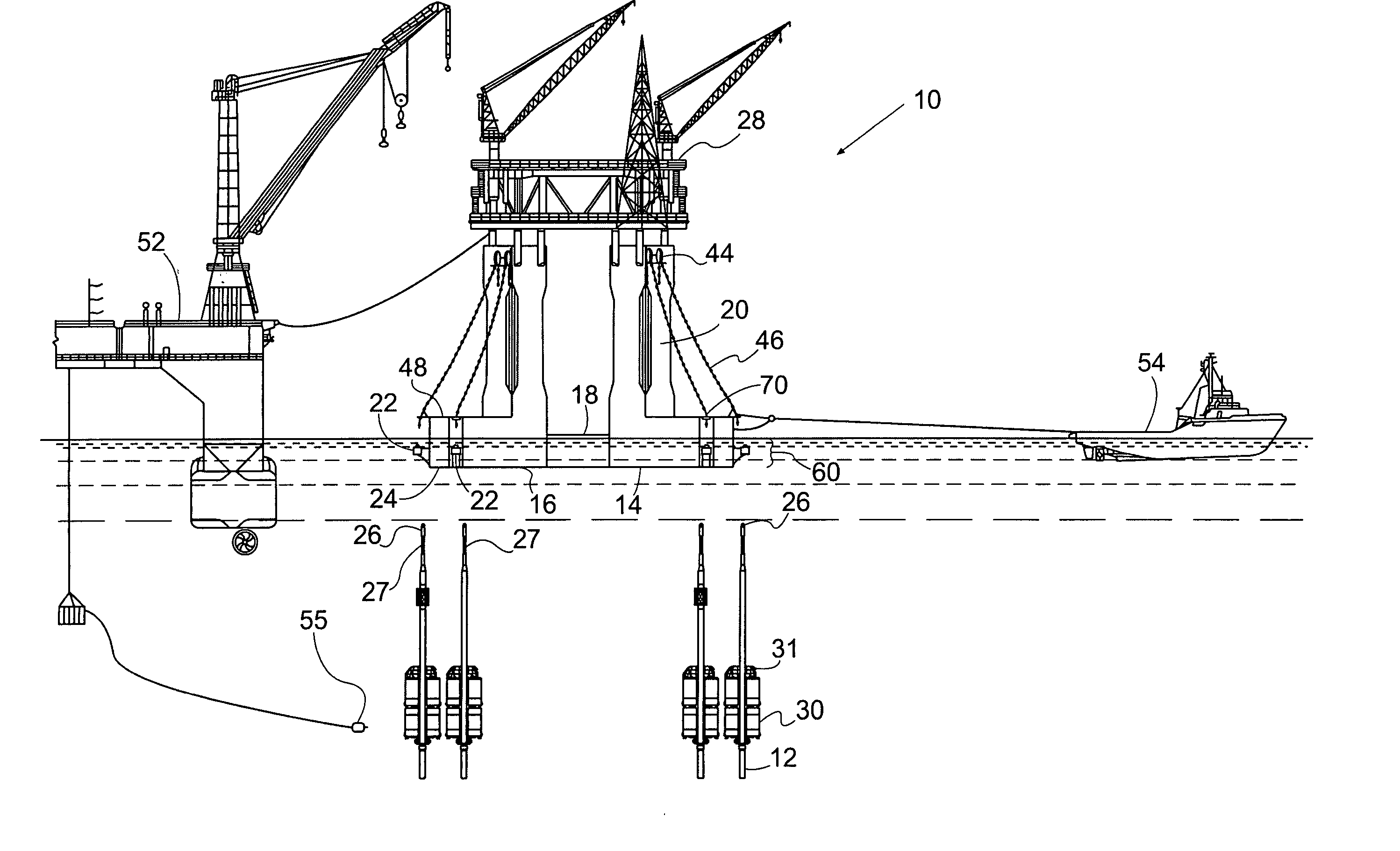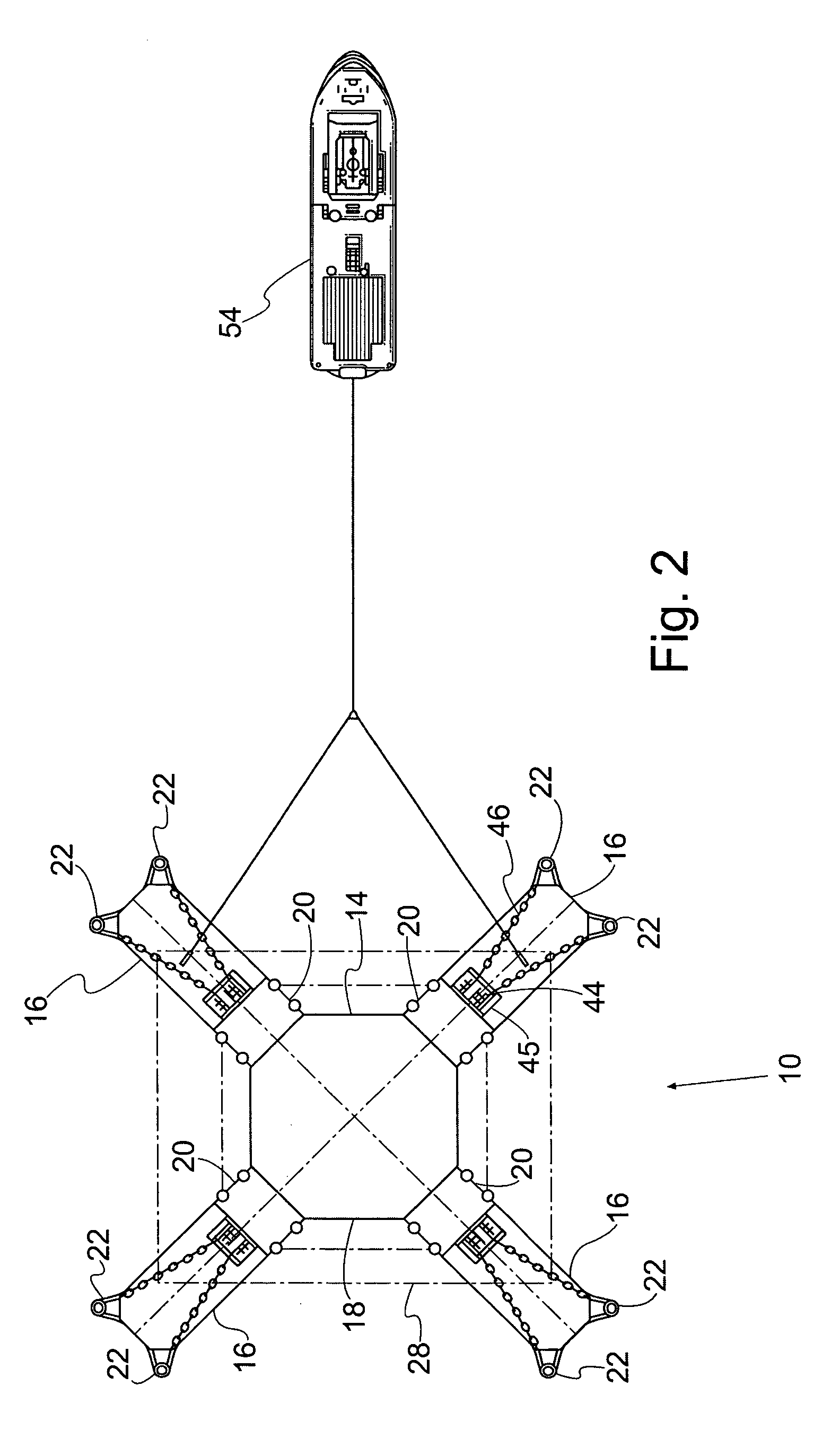Method of installation of a tension leg platform
a technology of tension leg and platform, which is applied in the direction of special purpose vessels, vessel parts, borehole/well accessories, etc., can solve the problems of high cost, high risk of operation, and inability to stabilize a tlp with or without an integrated deck during installation
- Summary
- Abstract
- Description
- Claims
- Application Information
AI Technical Summary
Benefits of technology
Problems solved by technology
Method used
Image
Examples
Embodiment Construction
[0042] A preferred embodiment of the invention is in a method and system for installing a TLP 10 to its vertical or near vertical mooring tendons 12. As shown in FIGS. 1 and 2, the TLP has a hull 14 comprising submerged or partially submerged pontoons or tendon support structures (TSS) 16 and a submerged or partially submerged base structure 18. The hull has a keel 24 and a top 48. The hull 14 has one or more vertical columns 20 extending upwards thereon which penetrate the surface of the water when the TLP is at installed draft. The hull 14 may support an integrated platform superstructure 28, which consists of one or more decks for drilling, production and processing equipment, support structures and human use.
[0043] Each tendon support structure 16 is designed to mate with at least one, but usually two or more tendons 12. The tendon support structures 16 include tendon porches located near the keel 24 which contain connection sleeves 22 to receive the upper tips 26 of the tendons...
PUM
 Login to View More
Login to View More Abstract
Description
Claims
Application Information
 Login to View More
Login to View More - R&D
- Intellectual Property
- Life Sciences
- Materials
- Tech Scout
- Unparalleled Data Quality
- Higher Quality Content
- 60% Fewer Hallucinations
Browse by: Latest US Patents, China's latest patents, Technical Efficacy Thesaurus, Application Domain, Technology Topic, Popular Technical Reports.
© 2025 PatSnap. All rights reserved.Legal|Privacy policy|Modern Slavery Act Transparency Statement|Sitemap|About US| Contact US: help@patsnap.com



